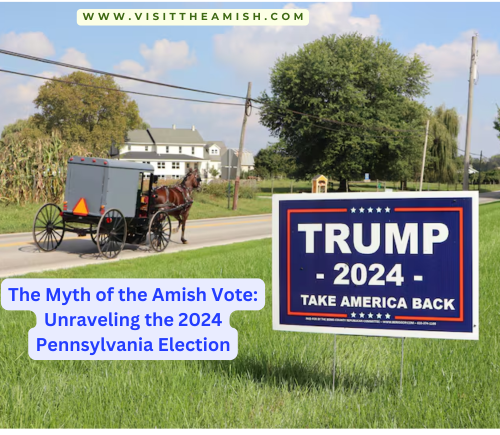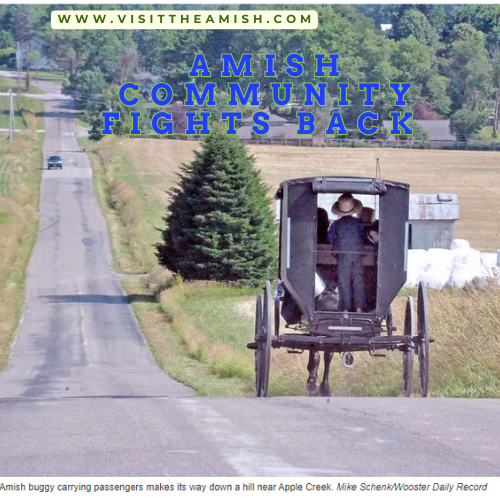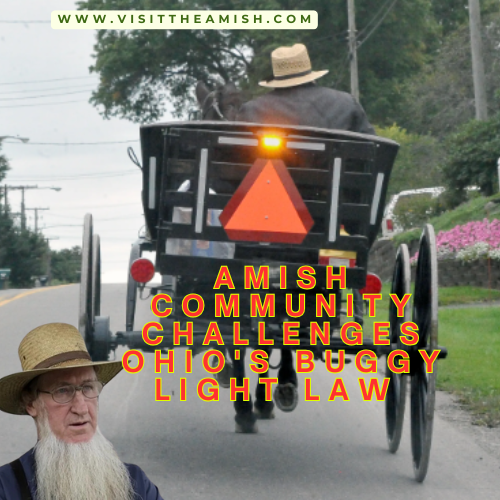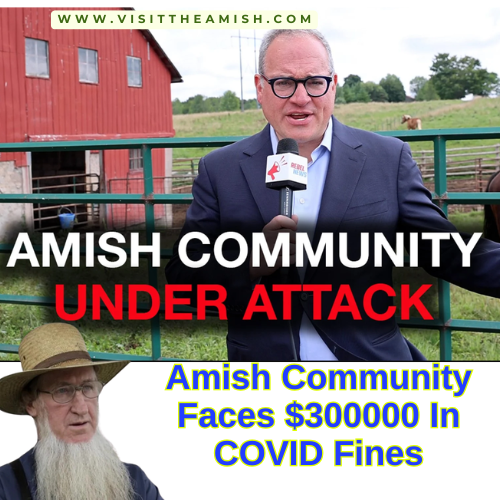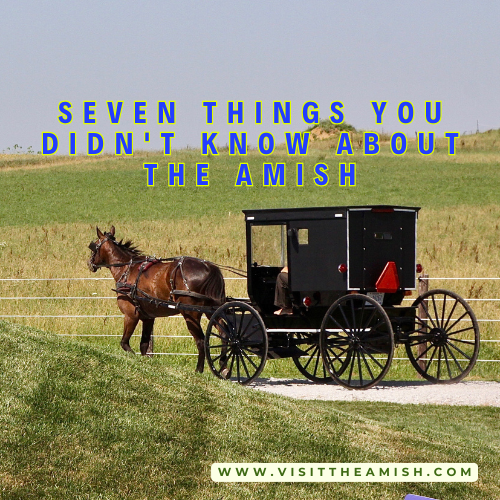Amish voters in Pa. did not carry the election for Donald Trump
In the aftermath of the 2024 U.S. Presidential Election, a narrative emerged that captured the imagination of political pundits and social media alike: the idea that Amish voters in Pennsylvania had played a decisive role in securing Donald Trump’s victory in the state. However, as the dust settles and experts analyze the data, it’s becoming clear that this story, while compelling, doesn’t quite match reality.
Pennsylvania, with its 19 electoral votes, has long been a crucial battleground state in presidential elections. In 2024, it once again found itself at the center of national attention as Donald Trump secured a victory over his Democratic opponent, Kamala Harris, by a margin of more than 121,000 votes[10]. This substantial lead came from increased support across various demographics throughout the state, including traditionally Democratic areas like Philadelphia.
The Amish community, known for their distinctive lifestyle that eschews many modern conveniences and emphasizes separation from worldly affairs, has long been viewed as a potential untapped voting bloc for conservative candidates. With over 90,000 Amish and Old Order Mennonite individuals residing in Pennsylvania – the largest such population in the country – the idea of mobilizing this group has tantalized political strategists for years[3].

However, the reality of Amish political participation is far more complex than campaign rhetoric might suggest. Steven Nolt, a leading expert on Amish culture and director of the Young Center for Anabaptist and Pietist Studies at Elizabethtown College, offers a sobering perspective on the alleged Amish voter surge[3]. “I do not expect to find a large jump in Amish voters,” Nolt stated, comparing the 2024 election to previous years. This assessment is based on preliminary analysis of vote returns in Lancaster County precincts with high Amish populations.
To understand the true impact of the Amish vote, it’s crucial to look at historical trends. In 2016, only about 7% of eligible Amish voters in Lancaster County cast ballots. This number saw a significant increase in 2020, jumping to 17% – representing approximately 3,400 votes out of the roughly 20,000 voting-age Amish in the county[3]. While this doubling of turnout was noteworthy, it still represented a small fraction of the overall Amish population.
The process of accurately determining Amish voter turnout is painstaking and time-consuming. Researchers at the Young Center must manually compare voter rolls with Amish church directories, matching names, addresses, and birthdates. This meticulous work is necessary because Amish leaders oppose the digitization of their community records, adding an extra layer of complexity to the analysis[3].

Despite the challenges in precise data collection, early indications suggest that the 2024 election did not see a dramatic shift in Amish voting patterns. Nolt’s assessment that there was likely only a marginal increase in Amish voters this year stands in stark contrast to the narrative pushed by some conservative activists and media outlets[3].
This isn’t to say that efforts weren’t made to court the Amish vote. The Trump campaign, along with various conservative groups, launched targeted initiatives aimed at increasing Amish turnout. Billboards and mailers specifically addressing Amish concerns were distributed, and weekly voter registration drives were held at Amish markets in Lancaster and Mifflin Counties[3].
One of the most high-profile efforts came from Elon Musk’s America PAC, which organized rides to polling stations for Amish voters. This initiative addressed a practical barrier to Amish participation, as many do not drive motor vehicles but are permitted to be passengers[3].
Philip Habegger, a former member of the Amish community who volunteered with the Trump campaign, provided insight into the mindset of many Amish regarding political participation. “My family would not have considered voting at all,” Habegger explained, despite their interest in and awareness of political issues. This reluctance stems from deeply held religious beliefs about separation from worldly affairs[3].
The Amish perspective on voting is rooted in their interpretation of Christian teachings regarding engagement with secular government. Many view political participation as conflicting with their commitment to serving God’s kingdom, leading to historically low voter turnout among the community[3].

However, there are signs that this stance is slowly evolving. State Representative Dave Zimmerman, whose district includes significant Amish and Old Order Mennonite populations, noted increased engagement and concern about the election outcome among these communities. “The Amish are going to be most concerned about being able to be free to be Amish,” Zimmerman explained, highlighting issues such as regulations or restrictions on religious freedoms as key concerns[3].
The gradual shift in Amish political participation reflects broader changes within the community. The Amish population in the United States is growing rapidly, nearly doubling every 20 years, with families typically having six to nine children. This demographic trend could potentially translate into a larger voter base in future elections[3].
Conservative activist Scott Presler, who runs the grassroots group Early Vote Action, sees long-term potential in engaging Amish voters. His organization is doubling down on efforts to court Amish and Old Order Mennonite communities, even hiring a state director specifically for this purpose. “We’re not going away. This is a real concerted effort, not just every presidential year,” Presler stated, indicating a strategy focused on incremental gains across Pennsylvania counties[3].
While Presler noted that counties with large Amish populations did produce more votes for Trump in 2024 compared to 2020, he acknowledged that these increases couldn’t be solely attributed to Amish voters. This nuanced view aligns with expert assessments that suggest the Amish vote, while potentially growing, remains a small part of the overall electoral picture in Pennsylvania[3].
The reality of Amish political participation is far more complex and nuanced than sensationalized headlines might suggest. While there is evidence of a slow increase in Amish voter turnout over recent election cycles, the impact on the 2024 presidential race in Pennsylvania appears to have been minimal. The narrative of Amish voters swinging the election for Trump, while captivating, doesn’t align with the data and expert analysis available.
This discrepancy between perception and reality highlights the dangers of oversimplifying complex political dynamics. The Amish community, like any other group, is not monolithic in its views or behaviors. While some Amish individuals may be becoming more politically active, many still adhere to traditional views on separation from worldly affairs.
As we move forward, it’s crucial to approach such narratives with a critical eye, relying on data and expert analysis rather than anecdotal evidence or wishful thinking. The story of the Amish vote in the 2024 election serves as a reminder of the importance of nuance and careful analysis in understanding political trends.
In the end, Donald Trump’s victory in Pennsylvania was the result of a broad coalition of voters across various demographics and regions of the state. While the Amish community may represent an intriguing potential voting bloc for future elections, their impact on the 2024 outcome appears to have been overstated.
As we look to future elections, the question of Amish political participation will likely remain a topic of interest. Will we see a continued gradual increase in Amish voter turnout, or will traditional values of separation from worldly affairs prevail? Only time, and careful analysis, will tell. What is clear is that understanding the political behavior of any group requires more than surface-level assumptions – it demands rigorous research, nuanced interpretation, and a willingness to look beyond sensational narratives.

Citations:
[1] https://timesofindia.indiatimes.com/world/us/us-election-results-2024-why-amish-who-never-vote-voted-for-trump/articleshow/115144822.cms
[2] https://www.washingtonexaminer.com/news/campaigns/3223711/why-amish-might-have-turned-out-trump-pennsylvania/
[3] https://www.inquirer.com/politics/election/pennsylvania-amish-voters-trump-2024-election-20241130.html
[4] https://anabaptistworld.org/another-election-courts-amish-voters/
[5] https://www.youtube.com/watch?v=eNbDbaF9Hvc
[6] https://amishamerica.com/5-ways-the-amish-celebrate-christmas/
[7] https://www.snydersfurniture.com/blogs/news/5-ways-the-amish-celebrate-christmas
[8] https://www.amishvillage.com/blog/how-do-the-amish-celebrate-christmas/
[9] https://www.ohiosamishcountry.com/articles/old-christmas
[10] https://www.perplexity.ai/elections/2024-11-05/us/president

